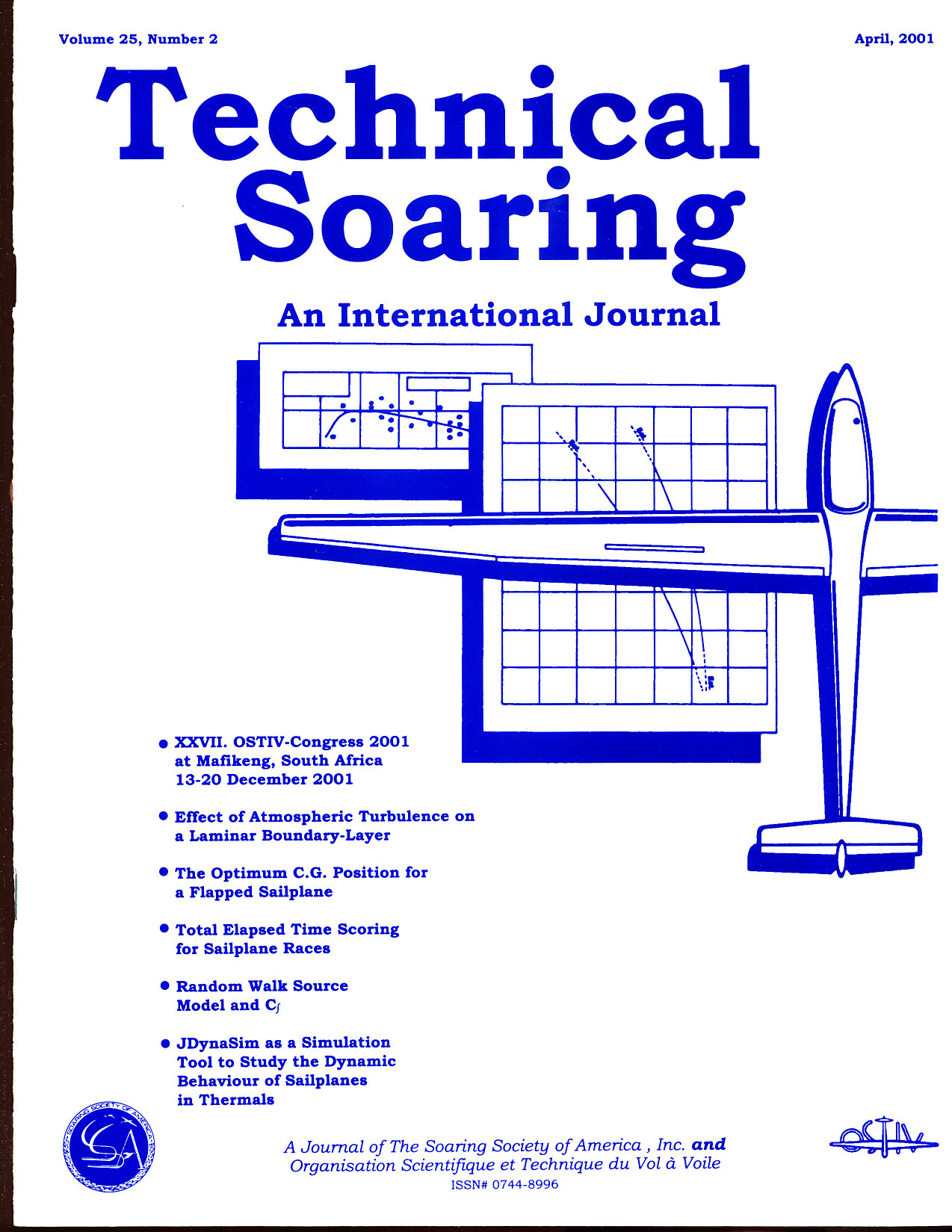'JDynaSim' AS A SIMULATION TOOL TO STUDY THE DYNAMIC BEHAVIOUR OF SAILPLANES IN THERMALS
Keywords:
Atmospheric physics, Aerodynamics, DesignAbstract
A fast and interactive software to simulate aircraft behaviour may be a very useful and helpful tool for aerospace research and design, especially when light aircraft and sailplanes are involved, and when atmospheric wind effects are to be considered. This paper presents an attempt to give interactive and realistic simulation possibility almost to everyone through the use of JDynaSim code. JDynaSim is an interactive graphic flight simulation code written in JAVA and VRML (Virtual Reality Modelling Language) languages which practically allows any user with any hardware (PC, workstations, etc.) to fly the aeroplane under investigation. This is true due to the fact that IAVA is a language born to work under a generic Internet browser (such as Microsoft Explorer or Netscape) and thus it is independent from the operating system under which it is running. The code uses the VRML to represent the aircraft motion and JAVA classes to control and interactively fly the aeroplane, solving runtime the dynamic motion equations in which atmospheric wind terms have been included. A simple thermal model has also been implemented in the code and useful information on dynamic behaviour of sailplane can be drawn when this is flown through the simulated thermals. Parametric variation of sailplane aerodynamic and geometrical characteristics has allowed to investigate the relative importance of aerodynamic coefficients on sailplane performances in thermal soaring. This paper will present the results of such an investigation. JDynaSim is available to everybody through Internet at the following URL: www.dpa.unina.it/coiro/.Downloads
Issue
Section
Articles
License
CLEARANCE AND LICENSE TO PUBLISH:
This paper is UNCLASSIFIED (for public reasons) and has been cleared by the appropriate agencies, company and government. This paper represents original work by the author(s). No portion of the material is covered by a prior copyright; or for any portion copyrighted, the author has obtained permission for its use.
I hereby license OSTIV to publish this paper and to use it for all of OSTIV's current and future publications uses.


